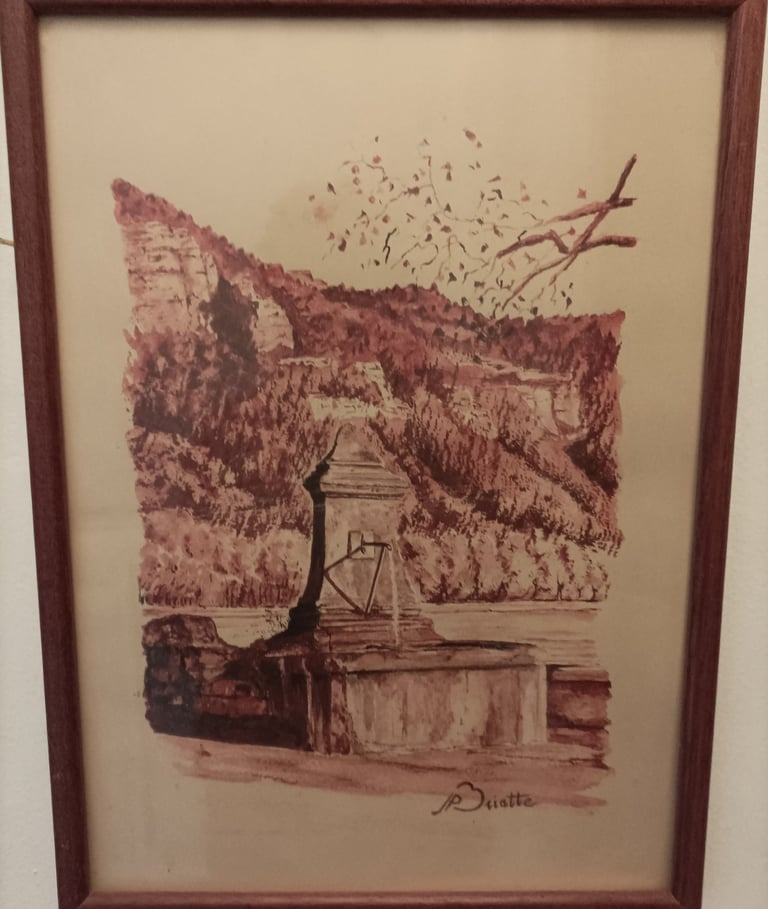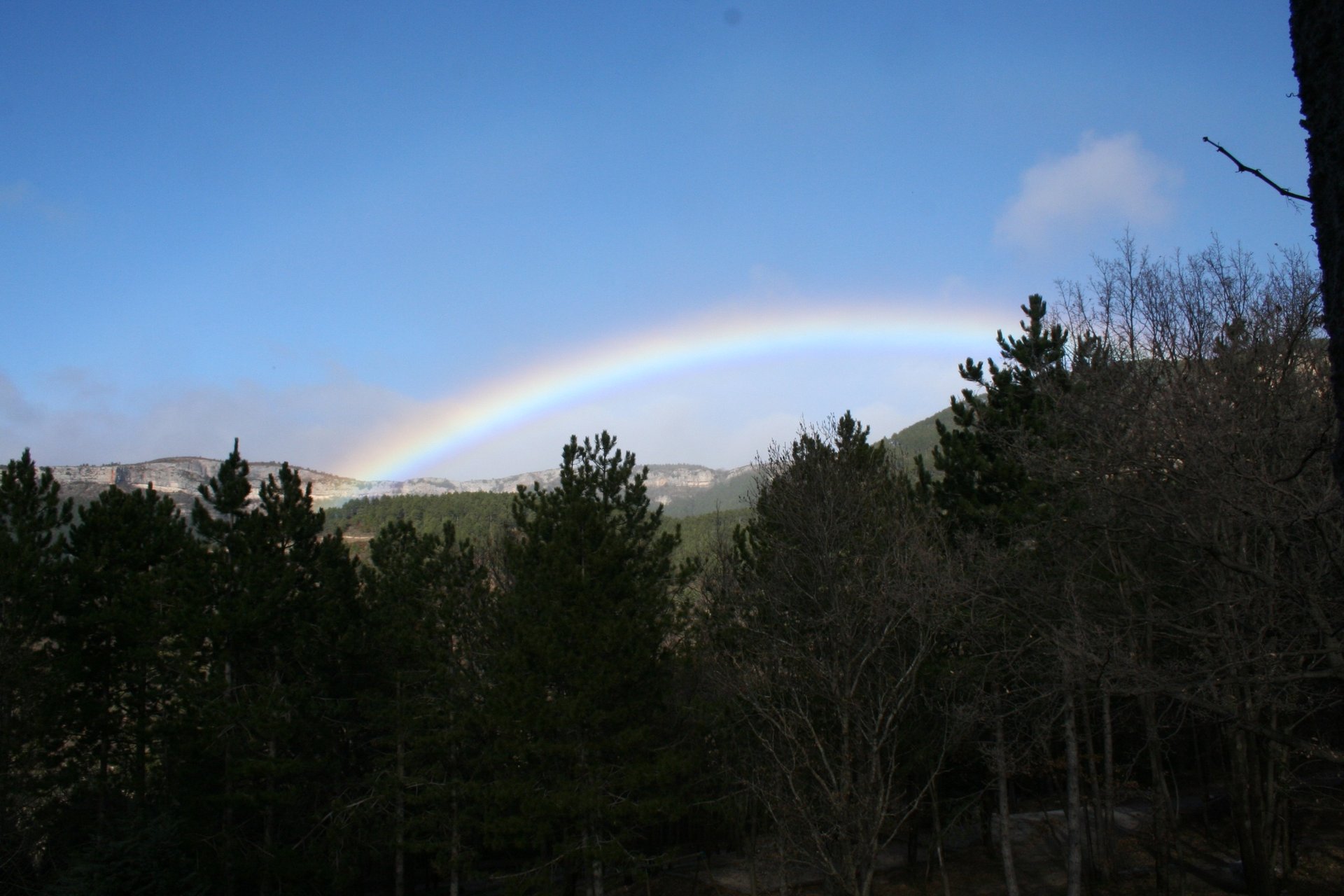
Come Gentle Rain
April Showers have arrived but it's only March
CLIMATE CHANGE SEASONS
Joan
3/27/20233 min read
Les Giboulées de Mars
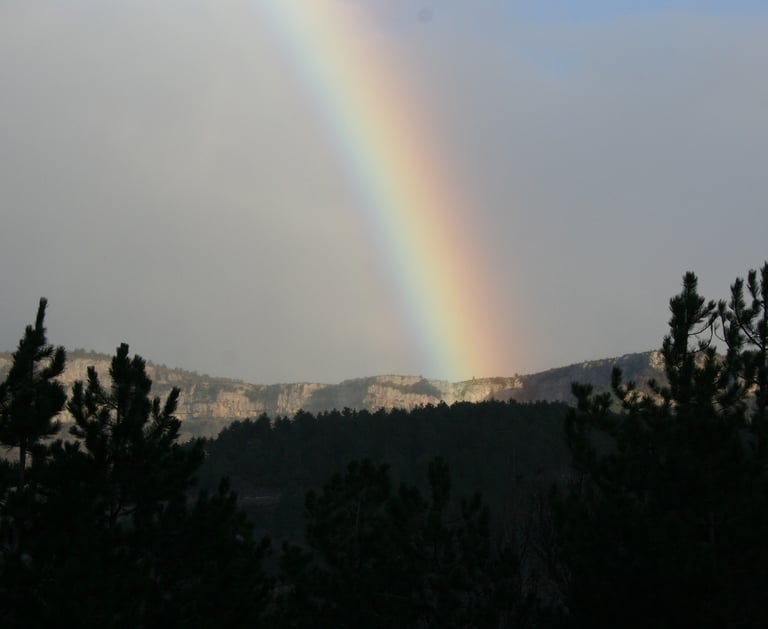

Yesterday morning I spotted a rainbow which stretched right across our valley. Maybe someone up there on the cliffs would even locate that pot of gold, but we were hoping for a different reward. So many times recently, heavy rainfall has been forecast for days ahead, only for it to disappear before the time arrived. But today was to be different. There was moisture in the air . As the day progressed clouds gathered and the wind got up , blowing a fine spray of moisture in our faces, and scattering the leaves with drops of rain. Then the sun came out, and for a while the sun and rain danced around each other. This was what we once knew in the U.K. as an April shower. In France they call April showers 'les giboulées de mars,' but in fact this phenomenon occurs around the spring equinox, any time between February and April. When it happens some look up at the sky and say 'le diable bat sa femme,' (the devil is beating his wife.)
But was the rain going to be adequate?Would it restart our source, and thereby begin to replenish our rapidly diminishing reserves of water. Alas no. April showers may be beautiful, but what we really need are some violent storms.


But meanwhile , let us appreciate the 'giboulées de mars. ' Perhaps they will moisten the hard dry earth and make it more absorbent. When I stepped outside I noticed how the leaves were spotted with raindrops that refracted the sun's rays like precious jewels. What's more, some thirsty plants like the wild orchid, and the euphorbia seemed to catch the precious drops in their curved leaves , and channel them towards their roots. How clever!

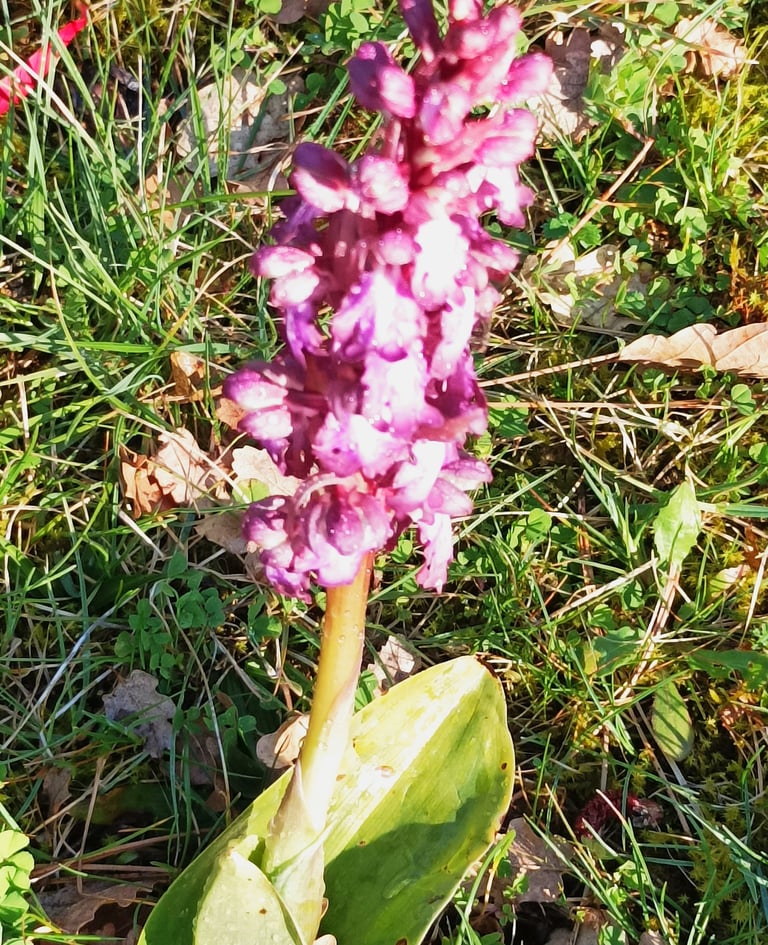
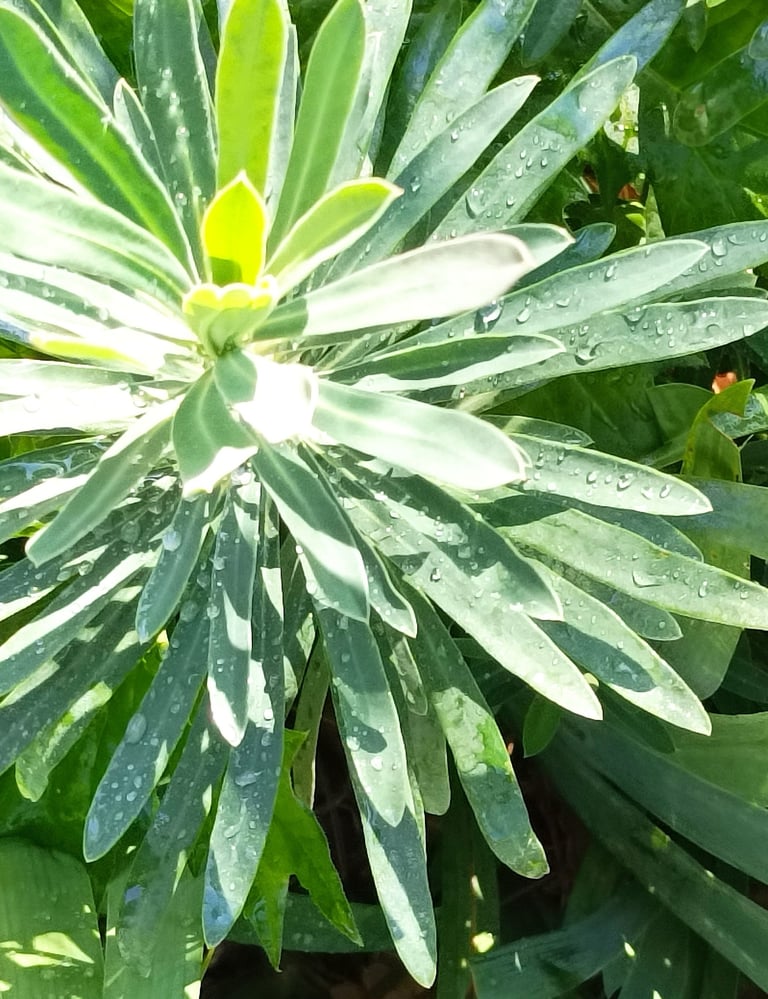

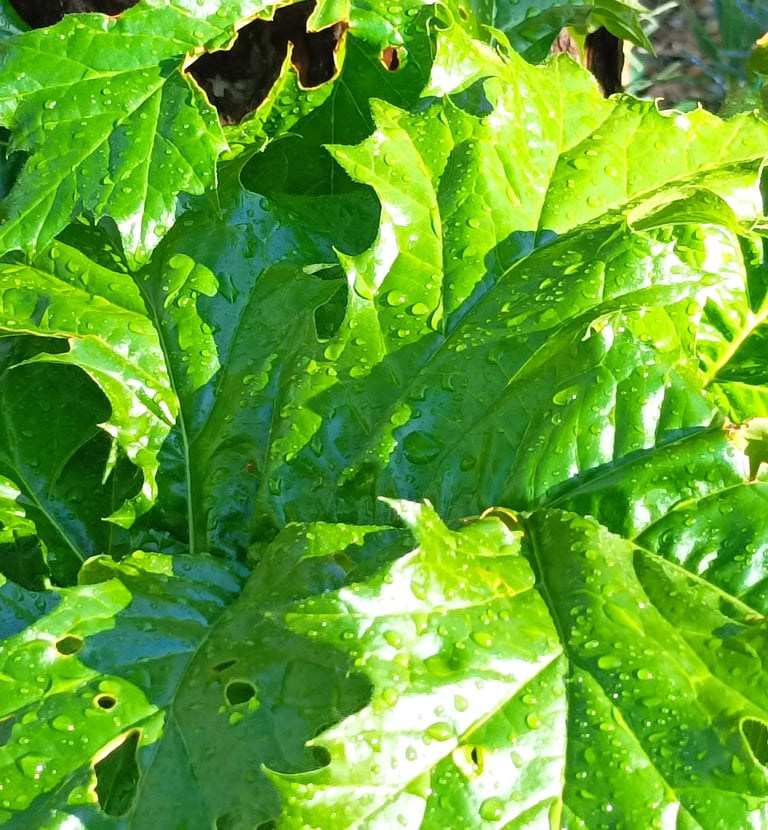

But some plants are so well adapted to our climate that they can survive with barely any water at all. We only have to look in our neighbours' gardens to learn which plants thrive. One of these is the sedum , and we see this creeping ground cover variety flowering every where we go at this time of year. Shortly after we first arrived, I confess I pinched a rooted piece from a neighbour's wall, and it has since burgeoned in many corners of our garden, bringing a splash of pink and yellow at this time of year. Hurrah for the creeping sedum, and all our beautiful plants.

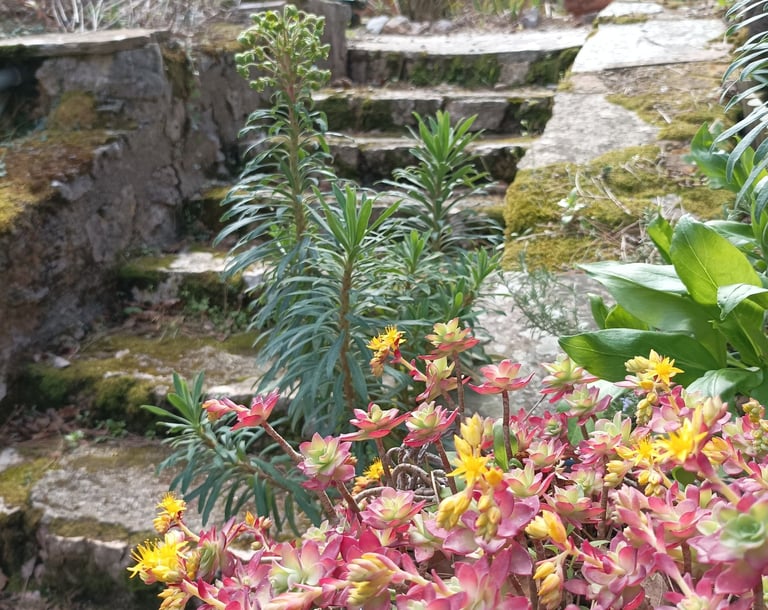
But all is not lost for us . If you have read my past blogs entitled 'Eau No!' you will realise that if the rain does not arrive, we will always be able to start pumping water from our 'forage' or bore hole. But we shall miss the sweet spring water that we have to drink. We will go along to the fountain in our village to fill up our 'bidons,' so that we may continue to enjoy this until the heavy rains return, and our source flows once more.
